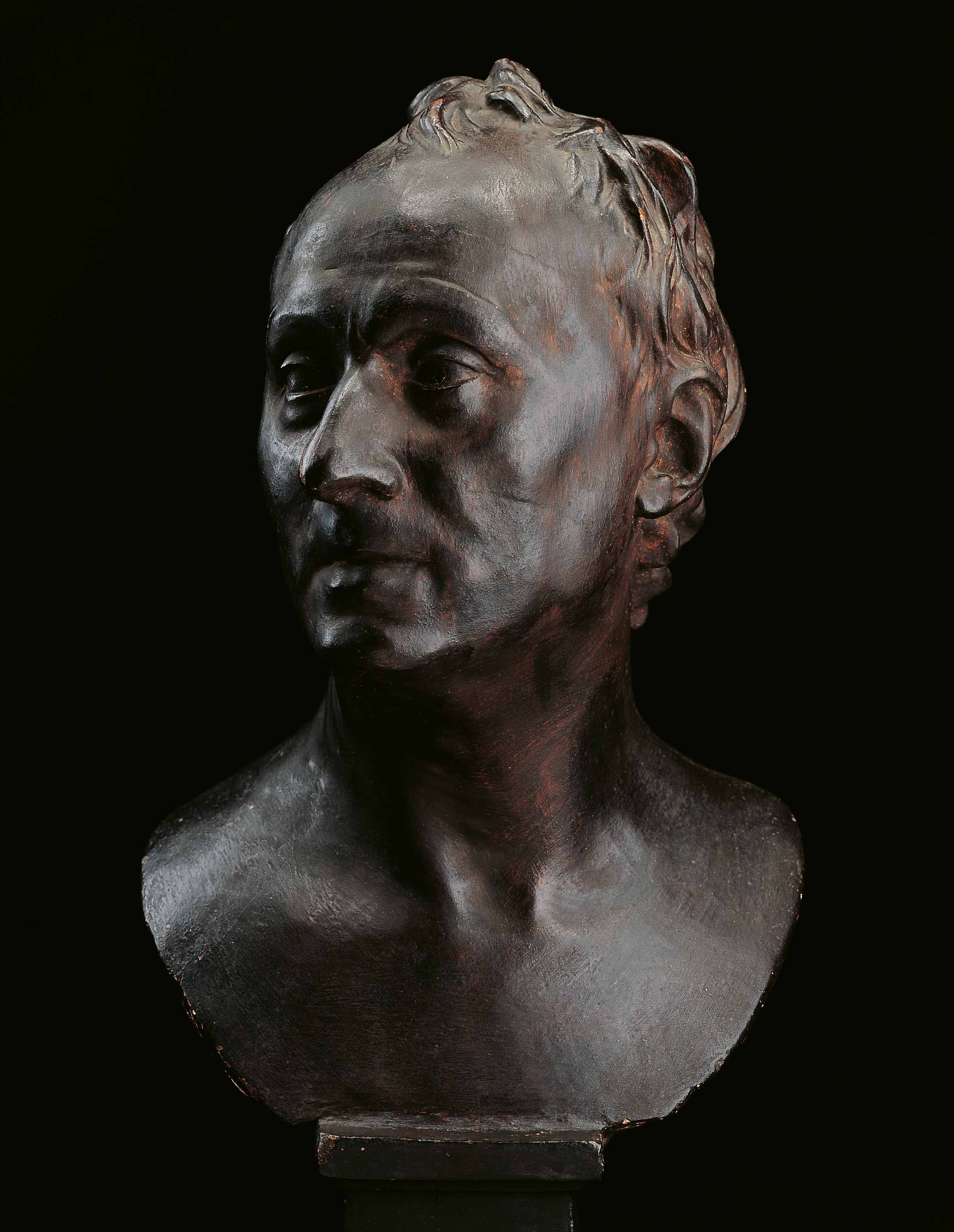
Bust of Diderot
Jean-Antoine Houdon (1741-1828)
18th century, Plaster with bronze patina
This bust of Diderot, by sculptor Jean-Antoine Houdon, appears to have been executed with profound psychological insight and clear, uncompromising realism, the result of Houdon’s close anatomical study. A similar terracotta version was presented at the Salon of 1769 and proved highly successful. So much so, that a number of copies were made in different materials: plaster, terracotta and bronze. Diderot himself, a harsh critic who frequented the Paris Salons, said that the work was a great likeness. In this version of the bust, the plaster is enhanced with a bronze patina, to make it appear more like the noble metal. It portrays one of the greatest representatives of the French Enlightenment. Starting in 1747, together with Jean Baptiste Le Rond d’Alembert, Diderot produced the Encyclopédie ou Dictionnaire raisonné des sciences, des arts et des métiers, which represented the thought of the Enlightenment. As the main editorial, political, and ideological contributor to this masterpiece, he wrote more than 6000 entries on various topics.

